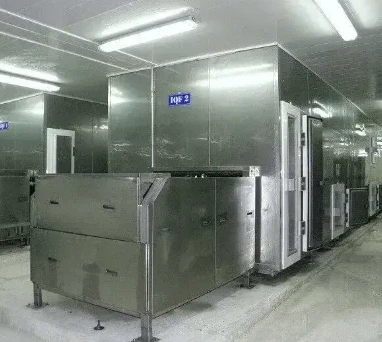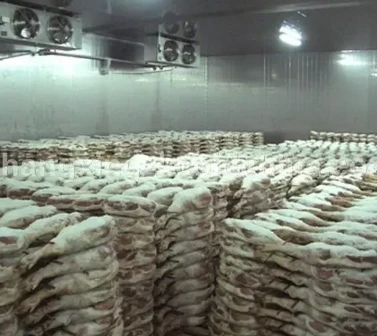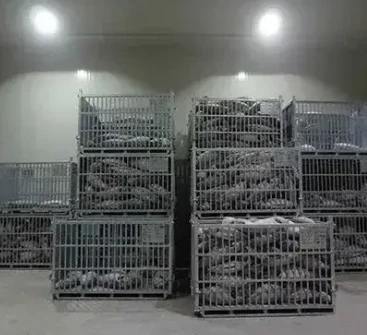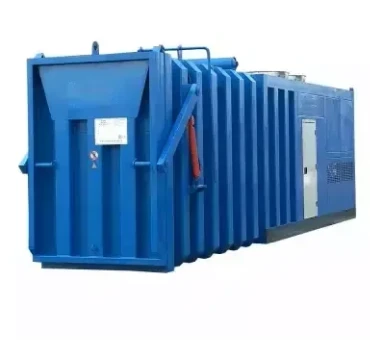May . 08, 2024 14:41
Back to list
Cold Room Cooling: Understanding the Basics and Best Practices
Cold rooms play a critical role in industries like food storage, pharmaceuticals, and manufacturing. They are designed to maintain low temperatures for preserving perishable goods, but the effectiveness of a cold room largely depends on its cooling system. This article explores the essentials of cold room cooling, covering system types, key components, best practices, and maintenance guidelines.
Types of Cold Room Cooling Systems
Cold rooms can use various cooling systems, each designed to meet specific needs. The most common systems include:
Refrigeration Units: These are standard cooling systems used in cold rooms. They consist of compressors, condensers, evaporators, and expansion devices. They operate on the basic principles of refrigeration, using a refrigerant to absorb heat and expel it outside the cold room.
2. Split Systems: Split systems are popular because they separate the compressor and condenser from the evaporator, reducing noise within the cold room. This type of system is ideal for large cold rooms and industrial applications.
3. Chilled Water Systems: These systems use chilled water to cool the air in the cold room. They are often used in larger facilities where multiple cold rooms require a centralized cooling source.
4. Evaporative Cooling: This system uses the evaporation of water to lower the temperature. It's often used in dry climates where humidity isn't a concern.-
Key Components of a Cold Room Cooling System
Understanding the critical components of a cold room cooling system can help you choose the right system and maintain it effectively. The key components include:
1. Compressor: This is the heart of the refrigeration system. It compresses the refrigerant, allowing it to absorb heat from the cold room.
2. Condenser: The condenser releases heat from the refrigerant to the outside environment, preparing the refrigerant for another cycle.
3. Evaporator: The evaporator absorbs heat from the air inside the cold room, cooling it down. This is where the actual cooling takes place.
4. Expansion Device: This component controls the flow of refrigerant into the evaporator, ensuring efficient cooling.-
Best Practices for Cold Room Cooling
To ensure optimal performance, follow these best practices for cold room cooling:
1. Temperature Monitoring: Consistently monitor the temperature inside the cold room. This ensures that it remains within the desired range and helps detect any issues early.
2. Regular Maintenance: Schedule routine maintenance to keep the cooling system in top condition. This includes checking for leaks, cleaning components, and inspecting the compressor and condenser.
3. Proper Insulation: Ensure the cold room is adequately insulated to minimize heat transfer from the outside. Good insulation reduces the load on the cooling system and helps maintain a consistent temperature.
4. Airflow Management: Proper airflow is crucial for effective cooling. Avoid stacking goods too close to the evaporator, and ensure that air can circulate freely throughout the cold room.-
Maintenance Tips for Cold Room Cooling Systems
Regular maintenance is crucial to ensure the longevity and efficiency of a cold room cooling system. Here are some key maintenance tips:
1. Clean the Condenser and Evaporator: Dust and debris can accumulate on these components, reducing efficiency. Regular cleaning helps maintain optimal performance.
2. Check Refrigerant Levels: Low refrigerant levels can affect cooling efficiency. Check for leaks and refill as needed.
3. Inspect the Compressor: The compressor should operate smoothly without unusual noises or vibrations. If you notice any irregularities, it may be time for a professional inspection.
4. Test the Thermostat: Ensure the thermostat accurately reflects the temperature inside the cold room. A faulty thermostat can lead to temperature fluctuations.
In summary, cold room cooling is an essential aspect of various industries, and its effectiveness depends on the right system, proper maintenance, and adherence to best practices. By understanding the types of cooling systems, key components, and essential maintenance tasks, you can ensure that your cold room operates efficiently and reliably, preserving the quality of stored goods.
Next:
Related PRODUCTS
Copyright © 2025 Shijiazhuang Xuexiang Refrigeration Euquipment Co.,Ltd. All Rights Reserved. Sitemap | Privacy Policy
















































































































